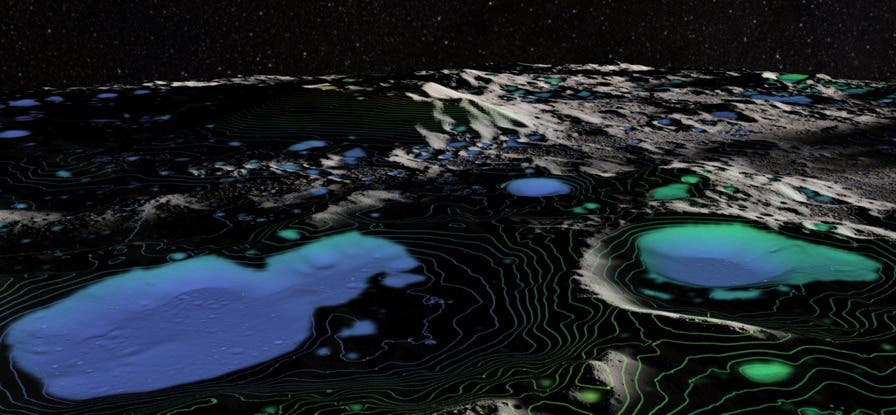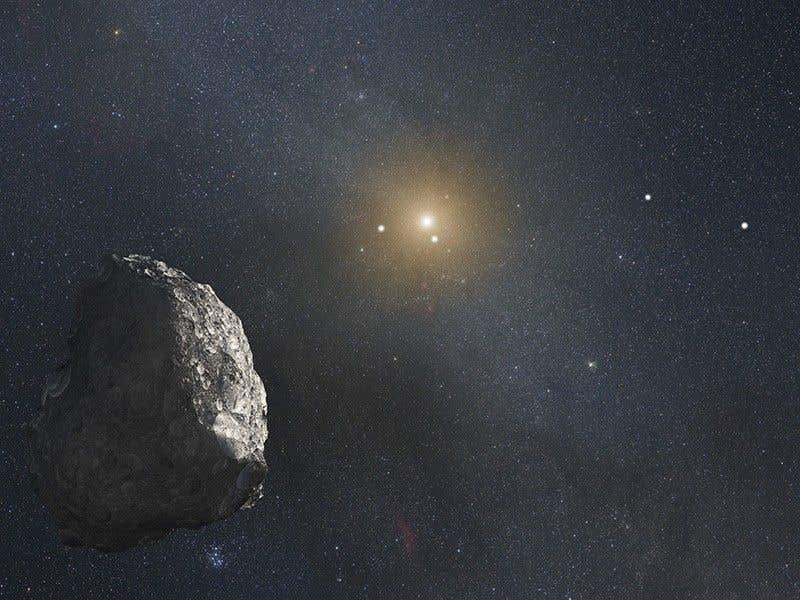There is significantly more water on the moon than previously thought, studies find
In groundbreaking news, two independent studies have pointed to the moon not being as arid as once believed.

[Sept. 8, 2023: Staff Writer, The Brighter Side of News]
In groundbreaking news, two independent studies have pointed to the moon not being as arid as once believed. (CREDIT: NASA's Goddard Space Flight Centre)
In groundbreaking news, two independent studies have pointed to the moon not being as arid as once perceived. Recent findings demonstrate a stronger lunar presence of water, leading scientists to believe that our satellite may hold more mysteries than previously anticipated.
While Earth boasts vast oceans, lakes, and ice caps, the moon's landscape is bereft of visible liquid water. However, new research underscores the possibility of water molecules embedded within the moon's mineral grains and potential ice patches tucked away in perpetual shadows.
Decades of Exploration, A Watershed Moment
Eleven years ago, the scientific community received inklings that small amounts of water might be scattered across the moon. Now, we're experiencing a paradigm shift. Scientists have reported the first incontrovertible detection of water molecules on the lunar crust, challenging long-held views of a parched satellite.
Simultaneously, new research points to a vast expanse - approximately 15,000 square miles (40,000 square kilometers) - of never-ending shadows on the moon. These areas, known as "cold traps," might be concealing water in its frozen form.
Related Stories
A Game-Changer for Future Missions
Considering water's invaluable nature, this discovery could be pivotal. Future manned and robotic missions could potentially utilize lunar water for diverse purposes, ranging from essential drinking supplies to its transformative role as a fuel component.
Casey Honniball, leading a team from NASA’s Goddard Space Flight Center in Maryland, conveyed the breakthrough detection of molecular water on the moon's surface. These molecules, she explained, are trapped within natural glasses or amidst debris grains. A pioneering method distinguished these water molecules from hydroxyl, their molecular kin, ruling out any ambiguities that plagued previous observations.
Relying on data from the SOFIA airborne observatory - an innovative Boeing 747SP aircraft equipped with a telescope - the team made this monumental find. Honniball clarified, “A lot of people think that the detection I’ve made is water ice, which is not true. It’s just the water molecules - because they’re so spread out they don’t interact with each other to form water ice or even liquid water.”
Another compelling study, published in Nature Astronomy, zoomed in on the moon's cold traps: regions condemned to eternal darkness. (CREDIT: Creative Commons)
Shedding Light on the Moon’s Cold Traps
Another compelling study, published in Nature Astronomy, zoomed in on the moon's cold traps: regions condemned to eternal darkness, with bone-chilling temperatures plummeting to around negative 260 degrees Fahrenheit (negative 163 degrees Celsius). Here, water in its icy avatar can persevere for eons.
Harnessing data from NASA’s Lunar Reconnaissance Orbiter spacecraft, Paul Hayne and his team from the University of Colorado, Boulder, discerned possibly tens of billions of minuscule shadows, akin to the size of a small coin, predominantly in the polar zones.
Hayne elucidated, “Our research shows that a multitude of previously unknown regions of the moon could harbor water ice. Our results suggest that water could be much more widespread in the moon’s polar regions than previously thought, making it easier to access, extract and analyze.”
Given NASA's ambitious plans of astronaut moon landings, which are seen as precursors to future Mars missions, these accessible water sources could be instrumental.
Highlighting the widespread nature of lunar water, Honniball added, “Water is not just constrained to the polar region. It’s more spread out than we thought it was.”
Molecular water detected on the sunlit Moon by SOFIA. µm band centre frequency distribution. (CREDIT: Nature Astronomy)
Deciphering Lunar Water’s Origins
Yet, a tantalizing question lingers: from where does the moon's water originate?
Hayne posited several theories, "The origin of water on the moon is one of the big-picture questions we are trying to answer. Current contenders are comets, asteroids, or small interplanetary dust particles, the solar wind, and the moon itself, through volcanic eruptions.”
Indeed, our blue planet, with its vast reservoirs of water, stands in stark contrast to the moon. But these revelations, Hayne suggests, could unlock secrets closer to home, “Understanding the origins of water on the moon can also shed light on the origins of Earth’s water - still an open question in planetary science.”
In the grand tapestry of space exploration, these findings serve as a potent reminder: the universe, with its ever-evolving mysteries, still has much to offer.
Note: Materials provided above by The Brighter Side of News. Content may be edited for style and length.
Like these kind of feel good stories? Get the Brighter Side of News' newsletter.



